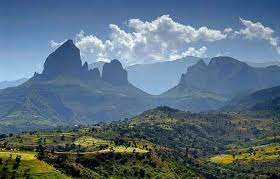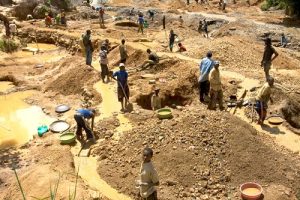
The green legacy that the country is leaving behind is becoming a significant solution to this issues like urban population growth, pollution, temperature rise, and the contemporary industrial revolution. The green legacy movement led to the establishment of parks that the community uses for recreation.
Ethiopia has numerous old parks that hold immense historical and recreational significance, offering a haven for people and visitors looking to find peace in the great outdoors. To maintain their ongoing beauty and usefulness, these historic parks need regular maintenance and preservation work, just like any other aging infrastructure.
Ethiopia’s historic parks have been essential green areas in urban settings, providing a break from the bustle of everyday life. Also, the parks have grown to be essential components of maintaining the nation’s cultural heritage.
Parks have the power to preserve the city’s soil, water, and climate, reduce carbon emissions from factories and discharge them into the atmosphere, enhance the city’s aesthetic appeal, and, in addition, boost the tourism industry. Moreover, the country’s economy benefits from the parks, which also shelter wild animals, encourage education and research, and assist in the preservation of native plant species.
Addis Ababa City Environmental Protection Authority, Biodiversity and Ecosystem Researcher, Eskedar Altaye, told The Ethiopian Herald that the question is not simply whether parks are there in the capital but also the parks that are offering good services to the community. She stated that it had conducted research to identify the parks that were not serving the community for a variety of reasons.
She further stated that the study report shows that although great ideas are in place for the development and maintenance of public recreation parks in Addis Ababa, they are not being implemented to the required extent.
Public recreation parks fail to meet the main goals of city parks; that they offer insufficient amounts and quality of facilities and services; it usually have insufficient management and maintenance systems; as well as confront a variety of social, economic, political, and environmental difficulties. She stated that there are a number of important managing challenges.
According to her, parks must address their problems with resource scarcity, management, and service delivery in order to expect boost park revenue, draw in more tourists, and provide the community with high-quality services.
While these parks have weathered the years, they now face the challenge of aging infrastructure and the effects of time. Neglected maintenance can result in deteriorating pathways, overgrown vegetation, and inadequate facilities, diminishing the overall visitor experience.
She stated that the goal of the investigation is to identify pork products under district, municipal, and sub-city management. This led to the identification of 31 parks, from which a research was conducted to ascertain the challenges associated with the management and input of these parks as well as the services provided in five of them.
Over 75% of the parks in the city and its surrounding areas are outdated and have not undergone renovations; as a result, they are also failing to deliver the necessary services to the community, she said.
Maintenance plays a crucial role in preserving the historical and aesthetic value of these parks. Regular upkeep, including landscaping, irrigation, and waste management, ensures that the parks remain inviting and accessible to the public. Additionally, repair and restoration efforts are necessary to address structural issues and maintain the original charm of the parks.
Deputy Manager of Addis Ababa City Public Recreation and Parks Management Corporation, Oromiya Chalchisa, said that parks confront a lot of challenges due to the fact that they have been operating for a long time. He stated that by figuring out these issues and working toward solutions, it is also trying to better serve society. He noted that there are numerous parks in the city that have undergone prompt renovations.
However, maintaining these old parks is not without its challenges. Limited funding, competing priorities, and a lack of awareness about the importance of preservation can pose obstacles to effective maintenance. Without proper attention and investment, these parks risk losing their attraction and historical significance, impacting the cultural and recreational experiences they offer.
She mentioned that institutional failure to collaborate is another major issue. Making the city enjoyable and appealing has become more difficult due to political interference and the general lack of awareness of parks in the community. According to her, coordinating efforts is appropriate in order to ensure that parks can deliver the necessary services.
To address these challenges, it is crucial for stakeholders, including government entities, local communities, and conservation organizations, to collaborate in maintaining and preserving Ethiopia’s old parks. Investing in regular maintenance, implementing sustainable management practices, and raising public awareness about the value of these parks can ensure their longevity and continued enjoyment for generations to come.
She points out the accomplishments of the efforts to point out areas for improvement in collaboration, in addition to indicating the path toward renovation. Also, that implies that anyone who is responsible for the problem should endeavor to determine the issue and address it.
She added that the parks are unable to offer the community the services they ought to since they do not have a budget to run them.
He said, “We are using technology to help us raise pork that satisfies the city’s standards, considering that it is an international seat.” The local government is working on a budget; the community needs to make a contribution towards resolving the problems associated with the parks, he added.
He mentioned that three of the city’s ten parks had been tendered and handed to contractors. One of these, Hamle 19 Park, the Ethio-Cuba and Ethio-Korea Friendship Park, received a redesign. Work is being done on development and building.
He remarked that three parks would be finished with their designs this fiscal year and that renovation work would begin.
Addis Ababa Environmental Protection Authority Deputy Manager, Walelign Desalegn, stated that as an organization, we will spread understanding, demonstrate practical approaches to working for environmentally friendly development, identify partners engaged in park operations, and assess whether these initiatives are successful or not.
He stated that Addis Ababa has a relatively huge population. There isn’t any accessible green development as a result.
In this sense, he also further stated that we will coordinate the upkeep of the city’s public amusement parks and enhance their amenities and services to better serve the city’s population and boost its tourism industry.
Besides, Ethiopia’s old parks are treasured assets that require ongoing maintenance and preservation efforts. Understanding the significance of these parks and allocating funds for their maintenance will guarantee that they remain lively green areas, providing comfort, historical context, and leisure activities for everyone who visits. They can preserve the cultural and environmental assets of Ethiopia and protect these parks by working together and committing to their preservation.
BY FIKADU BELAY
THE ETHIOPIAN HERALD TUESDAY 9 JANUARY 2024





